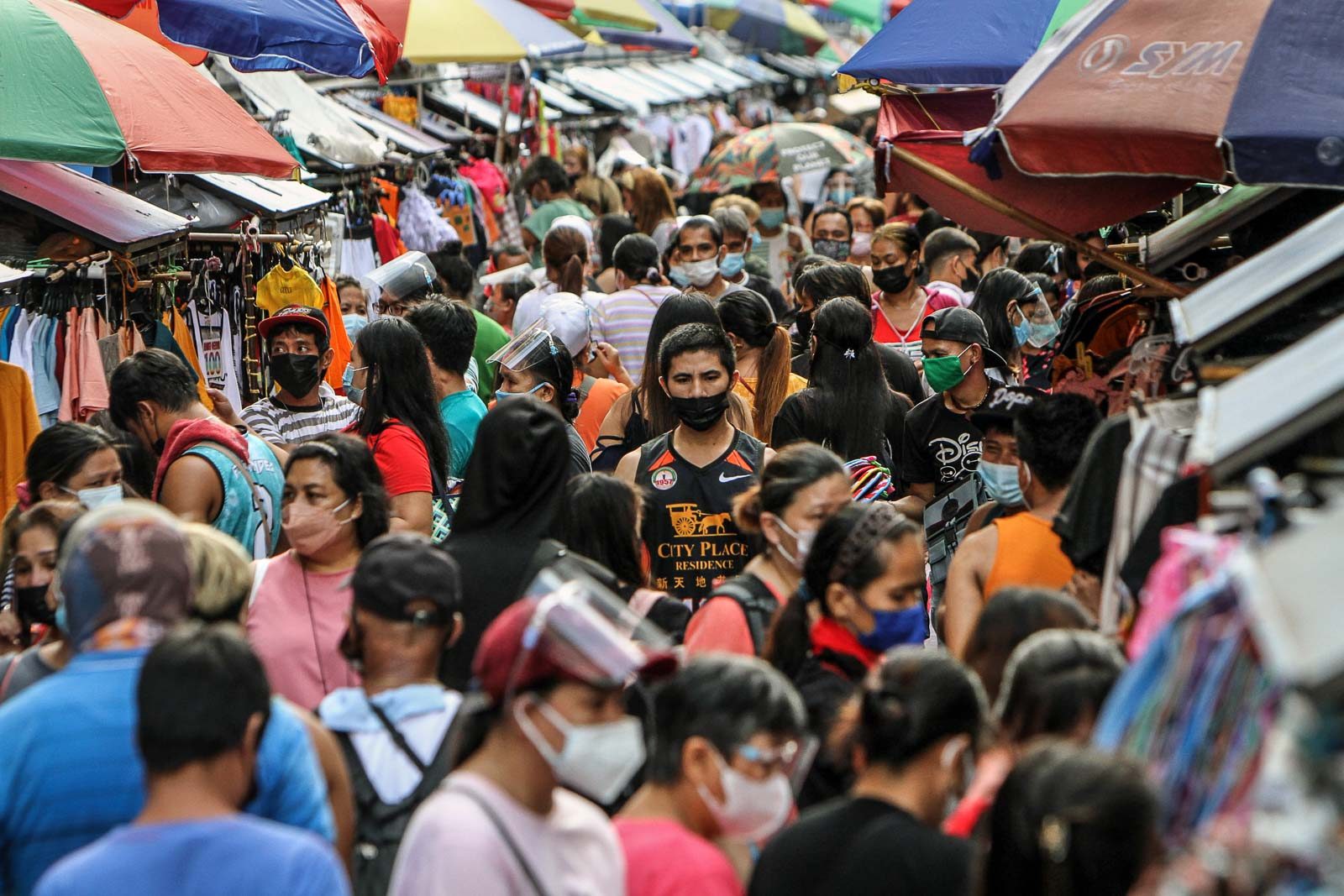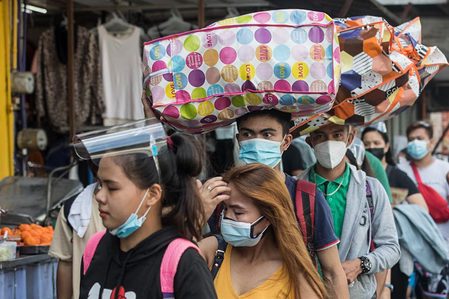SUMMARY
This is AI generated summarization, which may have errors. For context, always refer to the full article.

MANILA, Philippines – Nearly three years after COVID-19 reached Philippine shores, Metro Manila and 38 other areas will observe the lowest level of health restrictions beginning Tuesday, March 1, after infections continued to decline and hospital admission eased in recent weeks.
The government’s coronavirus task force approved placing the National Capital Region and 38 areas under Alert Level 1, at least until March 15. Here, establishments and public transportation are allowed to be fully operational.
It’s a step closer to business-as-usual, but not quite. Health Undersecretary Maria Rosario Vergeire said on Tuesday, February 28, that while shifting to Alert Level 1 brings the public nearer to “living with the virus,” it does not mean Filipinos can let their guard down against COVID-19.
Rather, Alert Level 1 is what health officials see as a sort of “in-between” phase, where COVID-19 is not as big an emergency as it was two years ago, but still isn’t at the level where it can be considered endemic in the country.
If cases start to spike and hospitals come under strain once more, government may hike restrictions back up, Vergerie said.
Below is an Alert Level 1 guide, based on statements from the government’s coronavirus task force:
Masks to stay on
- Well-fitting masks must be worn properly all time, both in indoor and outdoor setting, private and public establishments, and including use of public transportation.
- Exceptions will only be allowed when eating and drinking, participating in sports in venues that meet ventilation standards, and when doing outdoor exercises where physical distancing should still be observed.
All workplaces, establishments may operate at 100% capacity
- Includes all private offices and workplaces and public and private construction sites, following national policies on vaccination requirements for on-site work
- Flexible and alternative work arrangements may still be offered based on function or individual risk.
- Government offices “shall likewise adhere to 100% on-site workforce.” Off-site work will be subject to the Civil Service Commission and Office of the President’s rules and regulations
- Establishments are not required to set-up isolation facilities in the workplace.
Full capacity on public transport
- For land transportation: When moving between areas under Alert Level 1 and higher alert levels, rules on capacity will follow those that have the lower capacity
- For aviation, maritime, and rail public transport: “Operating in and out of Alert Levels 1 areas, the passenger capacity will be at 100%.”
- Use of acrylic or plastic dividers not required
- Ese of the Safe, Swift and Smart Passage (S-PaSS) travel management system not required for interzonal travel to areas under Alert Level 1.
No paper-based contact tracing; digital contact tracing ‘optional’
- All agencies and establishments under Alert Level 1 are not required to have health declaration forms or paper-based contact tracing
- The use of the StaySafe contact tracing application will be optional.
Proof of vaccination required for adults
- All individuals 18-years-old and up will be required to present proof of full vaccination to enter indoor establishments or participate in mass gathering that include the following, among others:
- In-person religious gatherings
- Gatherings for necrological services, wakes, inurnment and funerals for those who died of causes other than COVID-19 and for the cremains of the COVID-19 deceased
- All indoor dine-in services including kiosks, commissaries, restaurants, and eateries.
- For take out and outdoor or al fresco dining, no proof of full vaccination is required
- All indoor personal care establishments like barbershops, hair spas, hair salons, and nail spas, and those offering aesthetic/cosmetic services or procedures, make-up services, salons, spas, reflexology and other similar procedures including home service options
- Fitness studios, gyms and venues for exercise and sports
- All indoor cinemas or movie houses operating at full capacity
- Meetings, incentives, conferences, exhibition events and permitted venues for social events such as parties, wedding receptions, engagement parties, wedding anniversaries, debut and birthday parties, family reunions, and bridal or baby showers
- Venues with live voice or wind-instrument performers and audiences such as in karaoke bars, clubs, concert halls and theaters
- Indoor ancillary establishments in hotels and other accommodation establishments
- Venues for election-related events.
- Proof of vaccination should be shown before entry in such establishments that are closed, crowded, and close-contact settings
- Minors or those 17-years-old and below will not be required to present proof of vaccination status
On testing, quarantine, isolation
Testing protocols prioritizing the unvaccinated and those that have high risk of exposure will continue to be observed, while the use of RT-PCR tests will continue to be prioritized for seniors, persons with comorbidities, and health workers.
COVID-19 testing will be optional for those not part of these groups. Testing will also not be recommended for asymptomatic close contacts, unless symptoms start to show.
If symptomatic, individuals should isolate immediately regardless of test results and monitor symptoms. If testing will be done, swabbing should at least take 5 days from the last day of exposure.
The following quarantine and isolation guidelines will likewise continue to be observed:

– Rappler.com
Add a comment
How does this make you feel?

There are no comments yet. Add your comment to start the conversation.